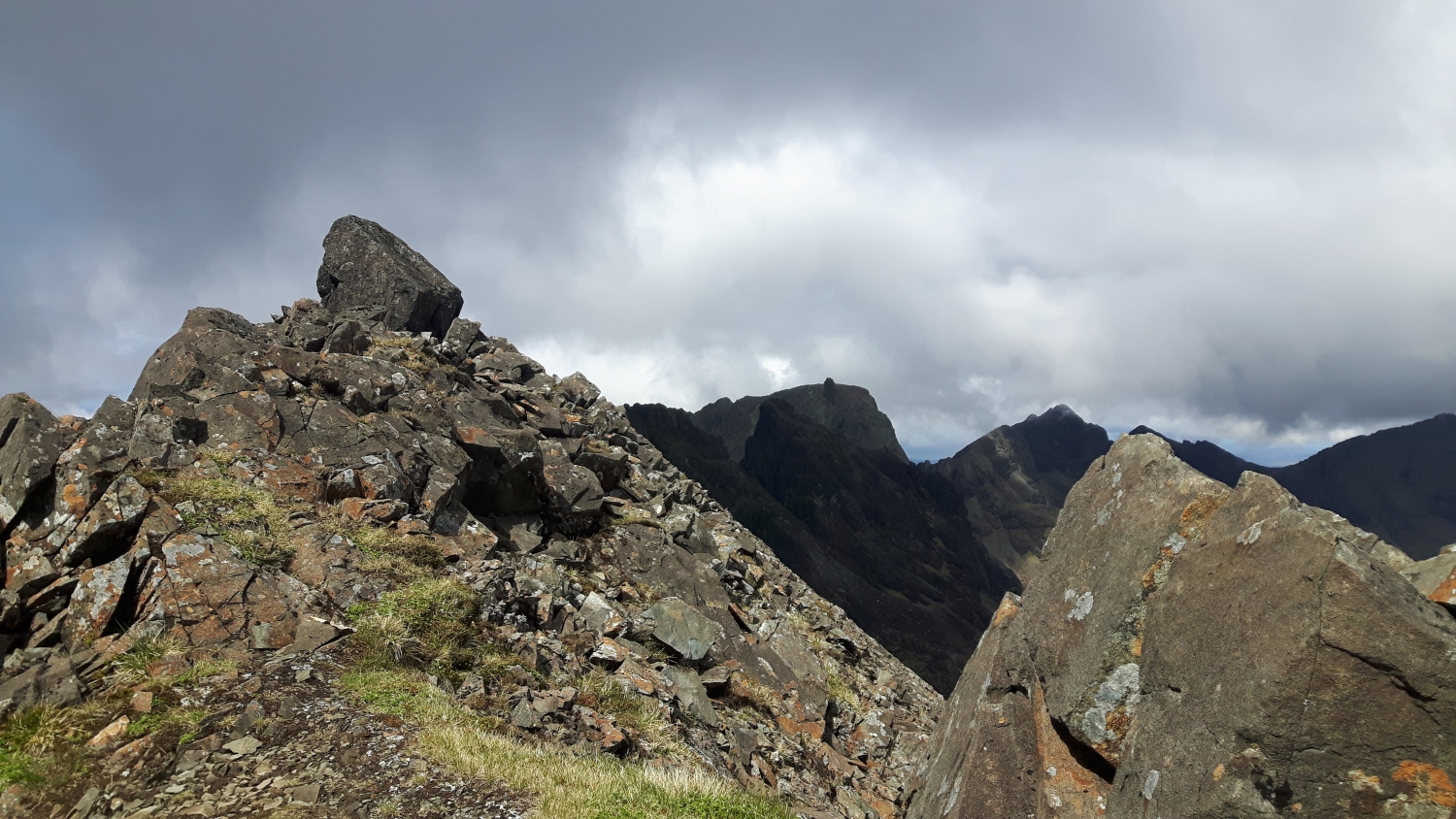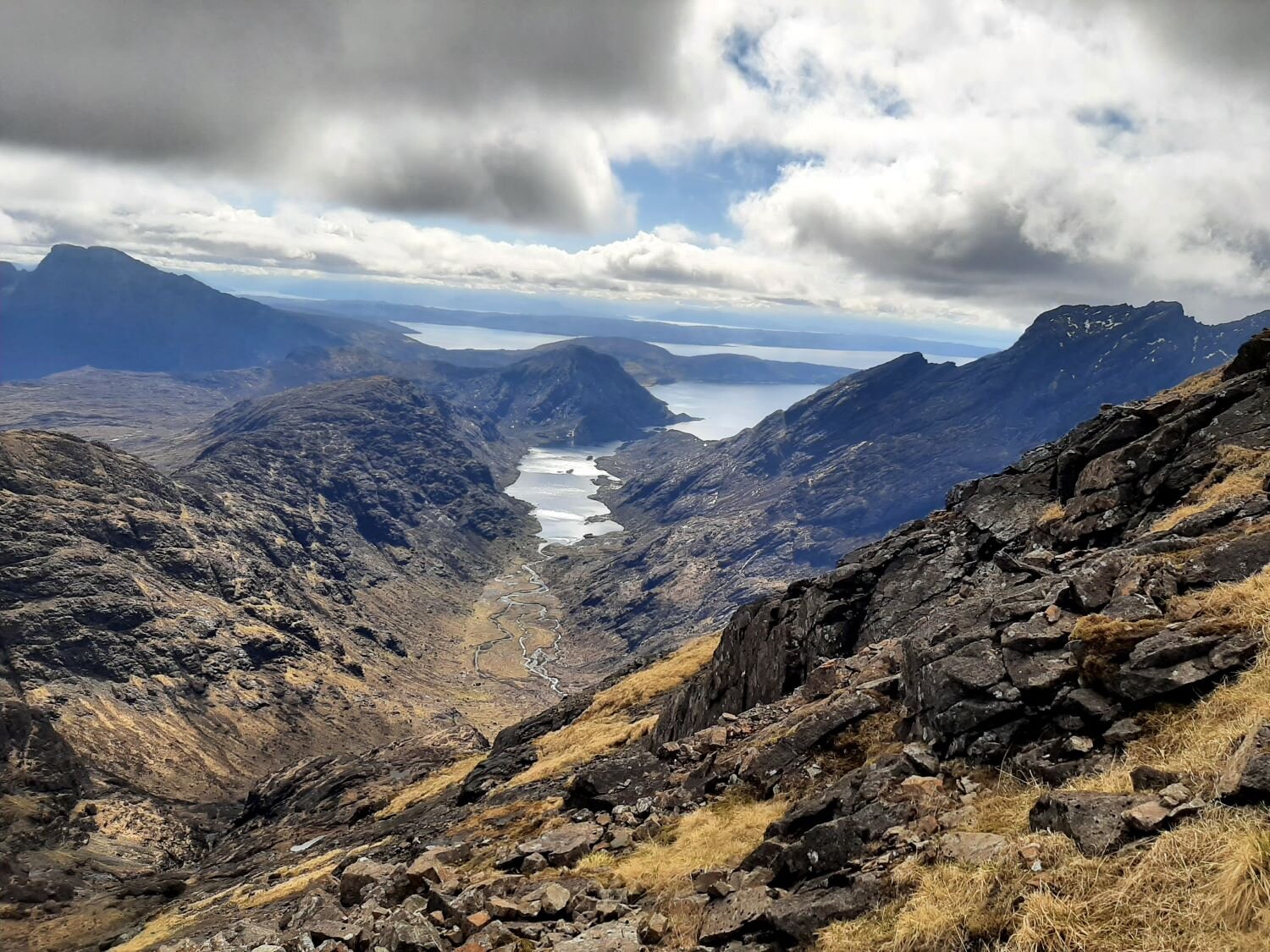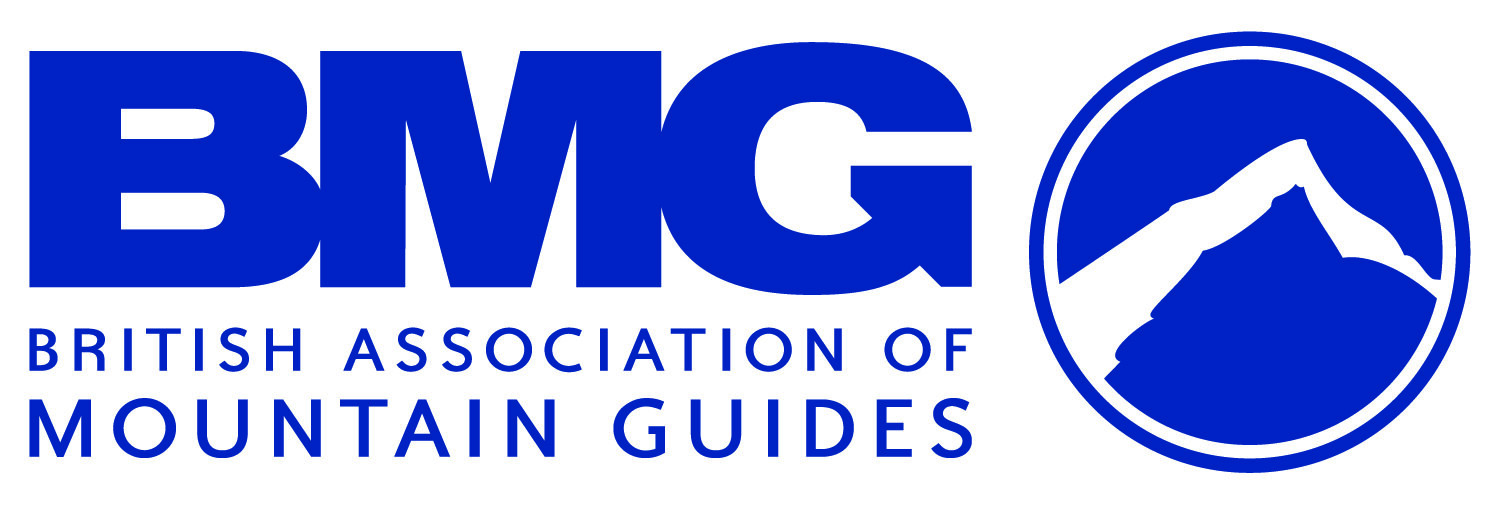Updated: What's So Special About The Black Cuillin Of Skye?
/WRITTEN by CHRIS & ANNE ENSOLL
This post was originally posted in May 2019 after our previous trip to Skye. We’ve kept all the background info, and added info from our trip last month.
Well, how long have you got? This paragraph from the introduction of the Skye & The Hebrides guidebook sums it up:
If you love mountains then you will almost certainly love the Cuillin. A marriage between rock, water and sky, these are mountains unique in their ambience and configuration. A classic and near perfect horseshoe provides the finest ridge traverse in Britain, whose flanks give a host of climbs on some of the finest rock imagineable.
Looking north from the summit of the Inaccessible Pinnacle on day two - Sgurr nan Banachdich and Sgurr a’Ghreadaidh and on towards the north end of the ridge
The Cuillin Ridge offers the nearest thing the UK gets to the Alps, with more than 3000m of ascent over a horizontal distance of 10km. Outings on the ridge need careful preparation and planning: rock climbing ability, navigation skills, fitness, and tactics all need to be considered. The climbing is never more than VDiff, but it often feels harder, and most is the ridge is sustained and exposed scrambling. But because of the special nature of the ridge, any trip to the Cuillin is to be treasured.
Early History
It is thought that a Scottish geologist, Mr MacCulloch, realising that the rocks on the Cuillin were different to the mainland, made seven unsuccessful attempts to reach the summits, partially assisted by a horse.
1836: Professor Forbes climbed Sgurr nan Gillean
1847: the same Professor Forbes climbes Bruach na Frithe
1857: Bla Bheinn was climbed by Messrs Nicol and Swinburne
1857: Mr Inglis made the first guideless ascent and climbed Sgurr nan Gillean by a new route
But the biggest impact on exploration of the ridge was made by two local Skye men, Alexander Nicolson and John MacKenzie, who was instrumental in almost every important ascent over 50 years. The guidebook describes their first ascent of Sgurr Dubh in 1874:
This particular epic involved the pair setting off up An Garbh-choire in September at 4pm and reaching the summit at 7pm. This entailed a descent in total darkness, using a plaid as a makeshift rope and finally reaching Coruisk by moonlight. It is unlikely that this feat has ever been emulated.
1886: Norman Collie first visited Skye, and explored the Cuillin Ridge with John MacKenzie. The Edge: 100 Years of Scottish Mountaineering, part 1, showed a reenactment of the pair on Skye, with our good friends Alan Kimber as Norman Collie and John Lyall as John MacKenzie - it’s definitely worth a watch. Cameron McNeish’s story of making the series in 1994 is also really interesting and can be read here.
The Ridge
The Cuillin Ridge is made up of a series of summits, eleven of which are Munros. Spellings of place names seem to vary - all the following spellings were taken from the Harveys 1997 Black Cuillin map.
Sgurr nan Gillean (965m)
Am Basteir (935m)
Bruach na Frithe (958m)
Sgurr a’Mhadaidh (918m)
Sgurr a’Ghreadaidh (973m)
Sgurr na Banachdich (965m)
Sgurr Dearg (the Inaccessible Pinnacle, 986m)
Sgurr Mhic Choinnich (948m)
Sgurr Alasdair (993m)
Sgurr Dubh Mor (944m)
Sgurr nan Eag (924m)
Gars-bheinn (not a Munro, 895m)
With all the Covid uncertainty, particularly about when restrictions in Scotland would be eased, we didn’t know if this year’s planned Cuillins trip would go ahead. One of the clients, Nigel, had booked to go last year in May, so he transferred his booking to May this year, and his friend Mark joined him. They were happy to wait and see what happened, and everything fell into place with the easing of restrictions on 26th April.
Day One
We started at Glen Brittle campsite, and this was our route:
Main track towards Coire Lagan / branched off to go under Sron na Ciche / up to Loch Coir ‘a Ghrunnda / Bealach a’ Garbh-choire / Sgurr nan Eag / back to Bealach a’ Garbh-choire / Sgurr Dubh Mor summit / back to Bealach a’ Garbh-choire / summit of Sgurr Dubh na Da Bheinn / along the ridge, missing out technical climbing on Thearlaich Dubh gap / up Bad Step / summit of Sgurr Alasdair / descent to Coire Lagan via the great stone shute.
Looking towards Sgurr Dubh Mor from Sgurr nan Eag
Looking down towards Loch Coruisk from Bealach a’ Garbh-choire
Looking north from Sgurr nan Eag
Day Two
Again we started from Glen Brittle campsite, and this was our route:
Into Coire Lagan / Bealach Mhic Choinnich / Sgurr Mhic Choinnich summit / Inaccessible Pinnacle / Sgurr na Banachdich / back to Glen Brittle
From the Inaccessible Pinnacle, looking at Sgurr Thearlaich, the great stone chute, and Sgurr Alasdair
Happy to finally be on the Cuillin ridge
Day Three
Started at Sligachan / Coire a Bhasteir / Bealach a’ Bhasteir / west ridge of Sgurr nan Gillean to the summit / back down the same way to Bealach a’ Bhasteir / ascent of Am basteir / back to Bealach a’ Bhasteir / past the bottom of Bhasteir Tooth / up to Bealach nan Lice / skirted round side of Sgurr a’ Fionn Choire / up to summit of Bruach na Frithe / descent into Coire a Bhasteir and back to Sligachan
Pinnacle Ridge and the summit of Sgurr nan Gillean
Climbing through the window on Sgurr nan Gillean
Day Four
Glen Brittle BMC hut / Coire An Dorus / Sgurr a’Ghreadaidh / Sgurr a’Mhadaidh / descent via Coire An Dorus to Glen Brittle. We left these two to the last day because the weather forecast wasn’t great, but it turned out to be a great day.
Looking from Sgurr a’Mhadaidh down to Loch Coruisk with Sgurr Dubh Mhor and the Dubhs ridge on the right
If you’re inspired to undertake a trip to this really special place next spring, drop us a line. To be safe and allow flexibility with the weather, three days is a much better bet than two, and four is even better. Check out all the details on the Cuillins of Skye page. We’re looking forward to hearing from you!














